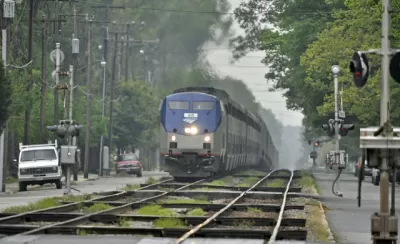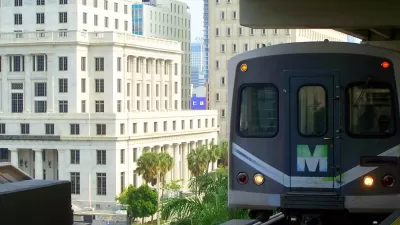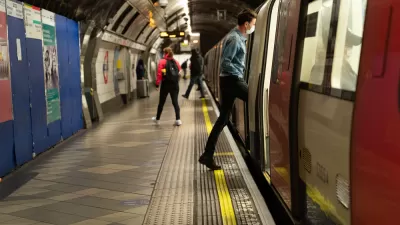Amtrak officials say they need $4.9 billion in funding to prevent service and job losses.

David Shepardson reports for Reuters on the financial state of Amtrak, where officials are asking Congress for $4.9 billion in additional funding to make ends meet during the pandemic.
Amtrak Chief Executive William Flynn went before Congress earlier this month to to request the additional funding, warning that the intercity rail system could face service and job cuts without the funding. Amtrak typically receives $2 billion in funding support from the U.S. government, according to Shepardson.
An earlier article by Pranshu Verma, written for The New York Times, also digs deeper into the pandemic context for Amtrak, comparing it to the U.S. Postal Service as a service provided by the government.
"For Amtrak, the coronavirus pandemic has not only slashed ridership and any chances of breaking even, it has also forced its leaders to face an existential choice: act like a for-profit airline or a government-subsidized entity," writes Verma.
Verma also provides more details on the specifics of the financial challenges facing Amtrak since the outbreak of the novel coronavirus earlier this year: "Since March, ridership on the national rail agency has fallen by 95 percent and projected revenue for 2021 has declined by 50 percent."
As noted in booth articles, Congress has already sent $1 billion in emergency funds to Amtrak, but Amtrak has been asking for more assistance since May.
FULL STORY: Amtrak CEO says passenger railroad needs up to $4.9 billion in U.S. funding

Study: Maui’s Plan to Convert Vacation Rentals to Long-Term Housing Could Cause Nearly $1 Billion Economic Loss
The plan would reduce visitor accommodation by 25,% resulting in 1,900 jobs lost.

North Texas Transit Leaders Tout Benefits of TOD for Growing Region
At a summit focused on transit-oriented development, policymakers discussed how North Texas’ expanded light rail system can serve as a tool for economic growth.

Why Should We Subsidize Public Transportation?
Many public transit agencies face financial stress due to rising costs, declining fare revenue, and declining subsidies. Transit advocates must provide a strong business case for increasing public transit funding.

How to Make US Trains Faster
Changes to boarding platforms and a switch to electric trains could improve U.S. passenger rail service without the added cost of high-speed rail.

Columbia’s Revitalized ‘Loop’ Is a Hub for Local Entrepreneurs
A focus on small businesses is helping a commercial corridor in Columbia, Missouri thrive.

Invasive Insect Threatens Minnesota’s Ash Forests
The Emerald Ash Borer is a rapidly spreading invasive pest threatening Minnesota’s ash trees, and homeowners are encouraged to plant diverse replacement species, avoid moving ash firewood, and monitor for signs of infestation.
Urban Design for Planners 1: Software Tools
This six-course series explores essential urban design concepts using open source software and equips planners with the tools they need to participate fully in the urban design process.
Planning for Universal Design
Learn the tools for implementing Universal Design in planning regulations.
Ascent Environmental
Borough of Carlisle
Institute for Housing and Urban Development Studies (IHS)
City of Grandview
Harvard GSD Executive Education
Toledo-Lucas County Plan Commissions
Salt Lake City
NYU Wagner Graduate School of Public Service





























